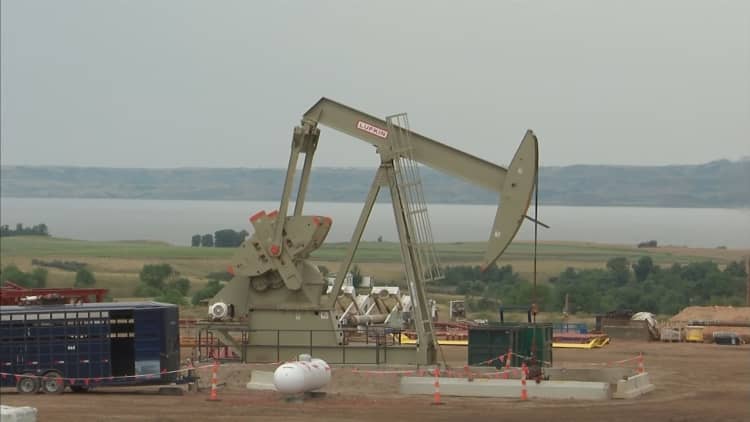Oil prices firmed on Friday as strong Chinese oil import data and turmoil in the Middle East boosted a market that is showing signs of rebalancing after years of oversupply.
U.S. West Texas Intermediate (WTI) crude ended Friday's session 85 cents, or 1.7 percent, higher at $51.45 per barrel. It was up about 4 percent on the week.
Brent was up 94 cents, or 1.7 percent, $57.19 at 2:29 p.m. ET, on track for a weekly gain of more than 2 percent.
Prices pared earlier gains after President Donald Trump said he would refuse to certify the Iran nuclear deal and could terminate the international agreement if he cannot reach a solution with Congress and allies. The deal paved the way for the recovery of Iran's oil exports, and Trump's actions could potentially lead to renewed sanctions.

"U.S. sanctions could cut off a lot of Iranian oil trade finance," FGE President Jeff Brown told Reuters this week.
Chinese oil imports hit 9 million barrels per day (bpd) in September, data showed on Friday. Imports averaged 8.5 million bpd between January and September, solidifying China's position as the world's biggest oil importer.
"We woke up with the strong data from China. That's on the supportive side," said Olivier Jakob, managing director of PetroMatrix.
China's huge imports have been strongly driven by purchases for its strategic petroleum reserves (SPR).
The nation has spent around $24 billion on building its crude reserves since 2015 and now holds around 850 million barrels of oil in inventory, according to the International Energy Agency (IEA).
Unrest in Iraq, and possible U.S. action on the Iran nuclear deal, also underpinned prices.
On Friday, local television reported that tens of thousands of Kurdish fighters had deployed in the Kirkuk oil region to confront possible "threats" from Iraqi forces.

Tensions between the two, which traders fear could cut off oil exports from the region, have been building since Iraq's Kurds overwhelmingly backed independence in a Sept. 25 vote.
Despite the bullish signals, Bernstein Research said that the Organization of the Petroleum Exporting Countries needed to extend its agreement to reduce oil output beyond its current March 2018 expiry date in order to clear stocks.
OPEC, with other producers including Russia, have agreed to production cuts of 1.8 million bpd.
"OPEC will not achieve normalised inventory levels before cuts expire at the end of March," Bernstein analysts said, adding: "We believe an extension of cuts through 2018 should allow inventories to reach normalised levels before the end of 2018".
Oil rigs declined for the second week in a row, with 5 less to bring the active total to 743, Baker Hughes reported Friday.

